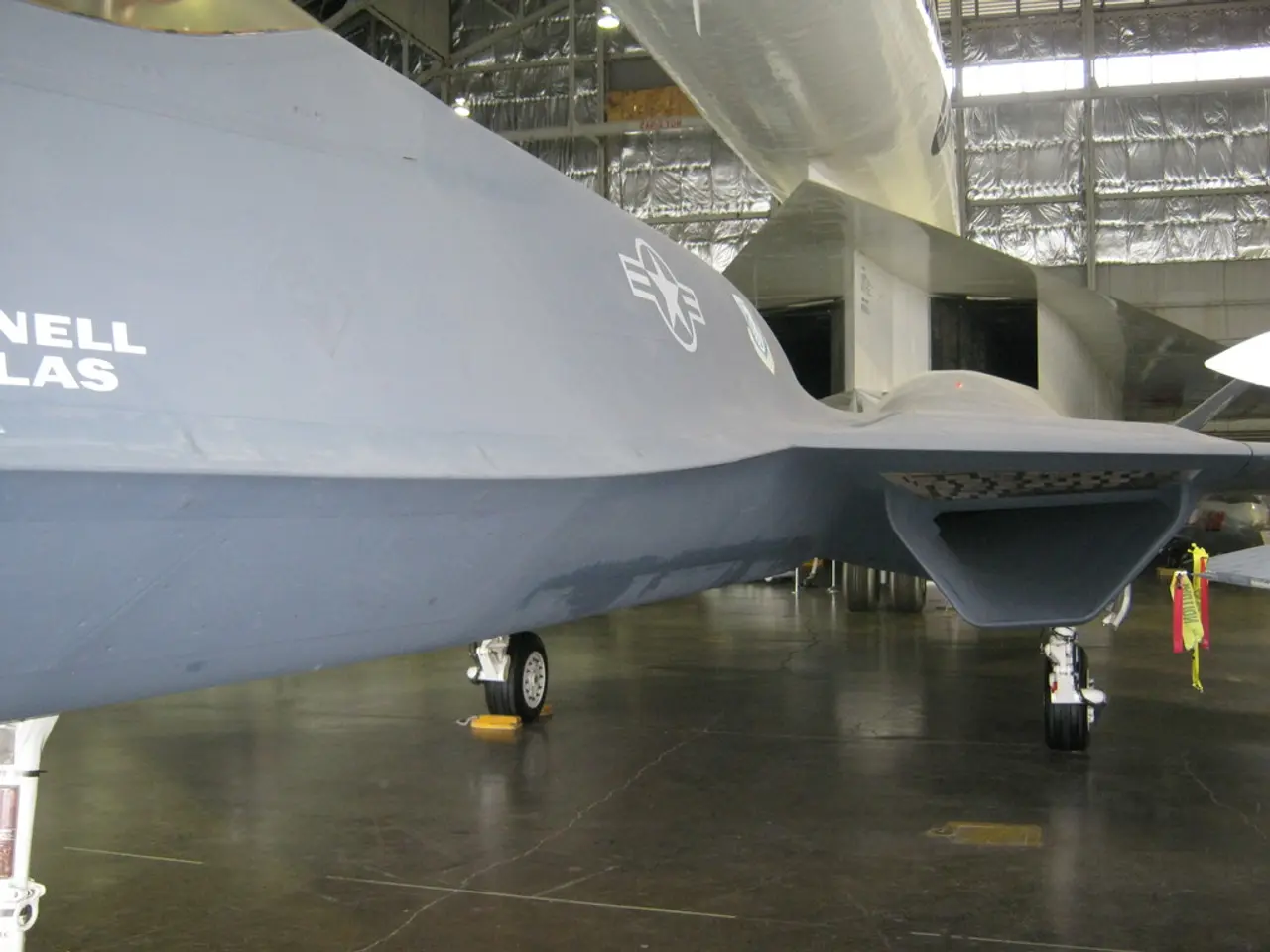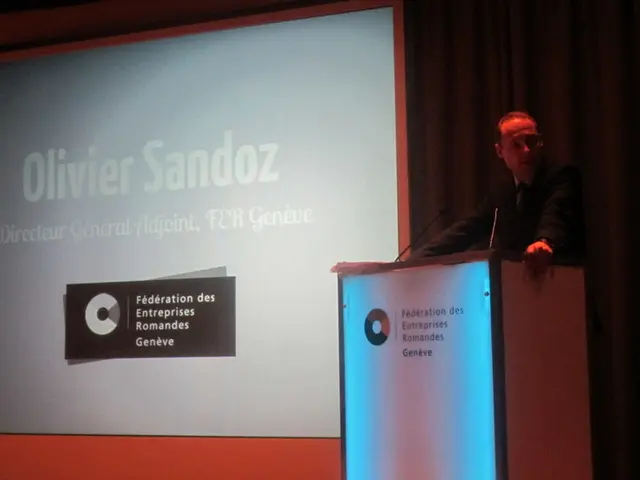High-Speed Spaceship Capable of Traveling From London to New York City in an Hour
The European Space Agency (ESA) has embarked on an ambitious project, the Invictus program, with the goal of creating a hypersonic space plane capable of speeds reaching Mach 5 (3,386 mph) by 2031 [1][5]. This groundbreaking initiative is led by the U.K. consulting firm Frazer-Nash, using technology developed by Reaction Engines Ltd. [1][5].
At the heart of the Invictus program lies the SABRE (Synergistic Air-Breathing Rocket Engine) engine, a hybrid propulsion system that seamlessly combines jet and rocket engine principles [1][5]. Key to this innovative technology is the pre-cooler technology, which rapidly cools the incoming air heated by compression at hypersonic speeds, preventing engine overheating and enabling continuous operation at extreme speeds [1][5].
The Invictus space plane will also utilise air-breathing technology during lower altitudes, extracting oxygen from the atmosphere to power the plane, reducing the need to carry heavy oxidizer onboard during the early phase of flight [1][5]. As the space plane ascends to higher altitudes where air becomes thin, the system will switch to burning liquid hydrogen fuel with onboard oxidizer, enabling spaceplane capability [1][5].
This combination of features makes Invictus a hybrid spaceplane capable of both atmospheric hypersonic flight and transitioning into space, offering potential for rapid long-distance travel and space launch applications [1][5]. The program aims to create a demonstrator based on SABRE-derived pre-cooler technology, marking a significant step in hypersonic and horizontal launch vehicle development for Europe [3].
As part of the development process, the Invictus team has been tasked with having a viable concept ready within 12 months [2]. If plans stay on track, the Invictus space plane could be operational by 2031, joining the ranks of other space planes such as the U.S. Air Force's X-37B and China's Shelong [4].
In the realm of private space travel, companies like Virgin Galactic are also making strides, with plans to introduce the Delta version of its space plane in the near future [6]. Meanwhile, U.S. companies Sierra Space Corp., Dawn Aerospace, and Radian Aerospace have also introduced their own versions of a space plane that takes off like a plane and soars like a rocket [7].
If the Invictus space plane reaches its full potential, it could help unlock the next generation of space planes, revolutionising the way we travel and explore the cosmos. The Invictus team is currently working towards a 12-month milestone for the completion of the concept phase, marking an exciting step forward in this ambitious project [2].
[1] https://www.reactionengines.co.uk/ [2] https://www.esa.int/ [3] https://www.reactionengines.co.uk/invictus/ [4] https://www.space.com/5146-x-37b-space-plane-us-military.html [5] https://www.bbc.com/news/science-environment-60616256 [6] https://www.virgingalactic.com/ [7] https://www.space.com/41644-private-spaceflight-companies.html
Read also:
- The current status of green hydrogen for developing countries following the wave of hype: Assessment of remains
- Rapid Growth in Bio-based Polypropylene Sector Anticipated at a Compound Annual Growth Rate of 26.5% by 2034
- Potential Fire Hazards in U.S Power Grids Due to Artificial Intelligence Data Facilities
- Quarterly Report on Business Operations by Lithium Universe Ltd








